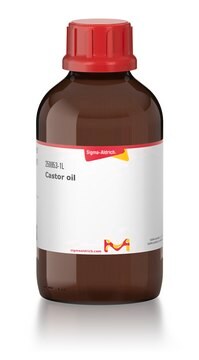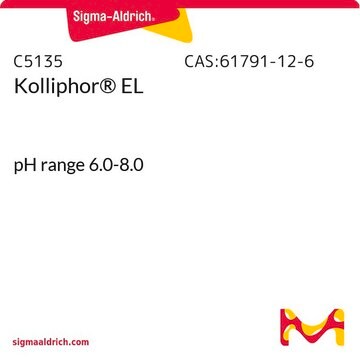S8281
Safflower seed oil from Carthamus tinctorius seed
About This Item
Produits recommandés
Source biologique
plant seeds (Carthamus tinctorius)
Forme
liquid
Indice de réfraction
n20/D 1.476 (lit.)
Densité
0.921 g/mL at 25 °C (lit.)
Groupe fonctionnel
carboxylic acid
oleic acid
Type de lipide
oils
Conditions d'expédition
ambient
Température de stockage
room temp
Vous recherchez des produits similaires ? Visite Guide de comparaison des produits
Application
<li><strong>Anti-osteoporosis effects of mammalian lignans and their precursors from flaxseed and safflower seed using zebrafish model:</strong> The study investigates the potential health benefits of safflower seed oil in preventing osteoporosis, highlighting its utility as a dietary supplement (Yang et al., 2023).</li>
</ul>
Forme physique
Code de la classe de stockage
10 - Combustible liquids
Classe de danger pour l'eau (WGK)
awg
Point d'éclair (°F)
Not applicable
Point d'éclair (°C)
Not applicable
Équipement de protection individuelle
Eyeshields, Gloves
Certificats d'analyse (COA)
Recherchez un Certificats d'analyse (COA) en saisissant le numéro de lot du produit. Les numéros de lot figurent sur l'étiquette du produit après les mots "Lot" ou "Batch".
Déjà en possession de ce produit ?
Retrouvez la documentation relative aux produits que vous avez récemment achetés dans la Bibliothèque de documents.
Les clients ont également consulté
Notre équipe de scientifiques dispose d'une expérience dans tous les secteurs de la recherche, notamment en sciences de la vie, science des matériaux, synthèse chimique, chromatographie, analyse et dans de nombreux autres domaines..
Contacter notre Service technique









